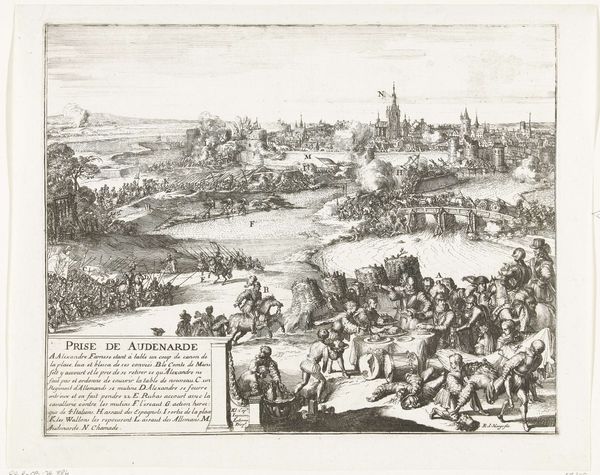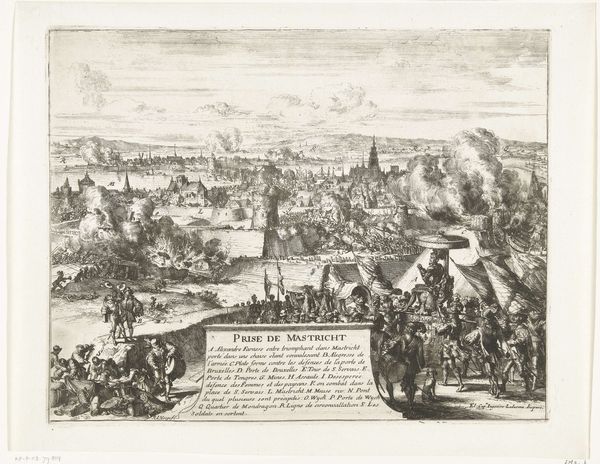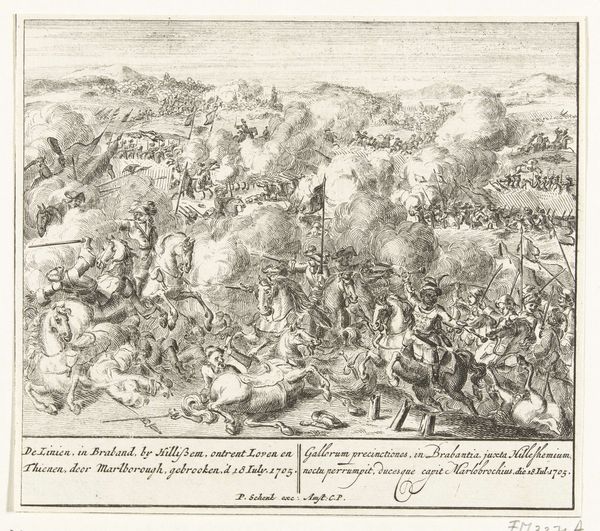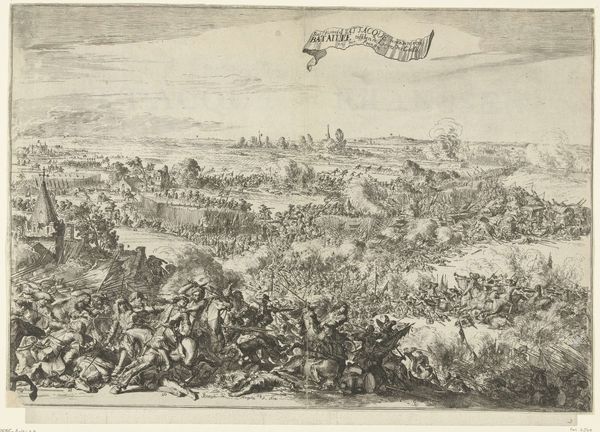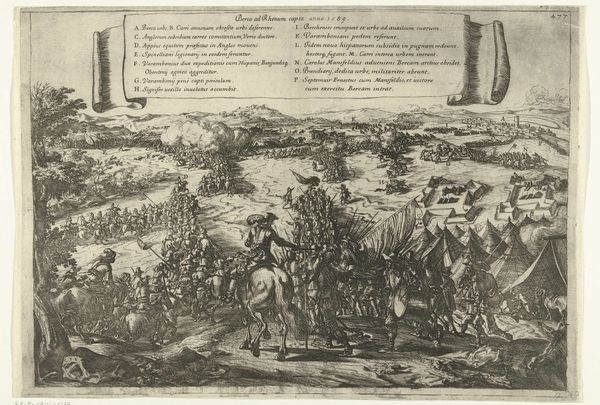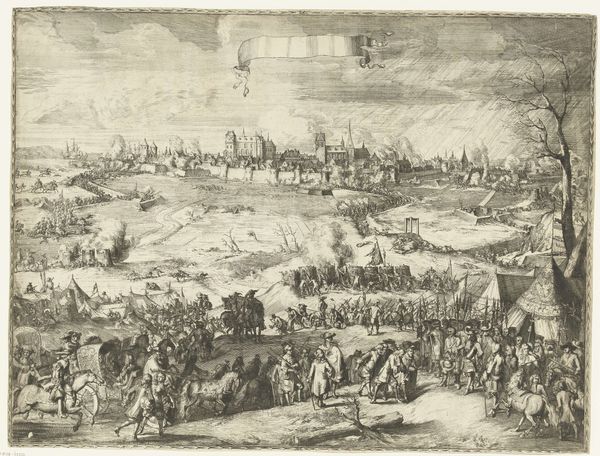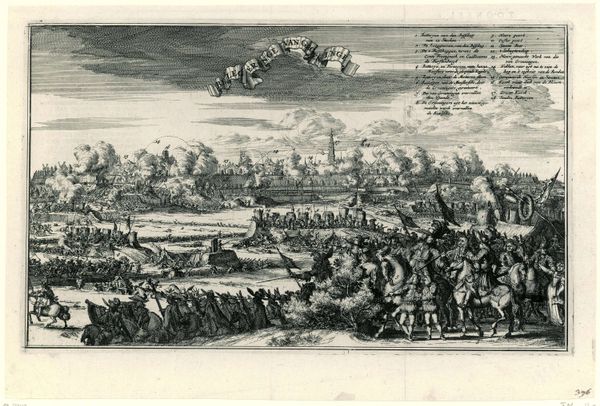
print, engraving
#
baroque
# print
#
cityscape
#
history-painting
#
engraving
Dimensions: height 272 mm, width 337 mm
Copyright: Rijks Museum: Open Domain
Editor: So, this engraving is "Inname van Doornik, 1581" by Romeyn de Hooghe, made sometime between 1670 and 1699. It depicts a siege. I'm immediately struck by the chaos and density of the image; it’s almost overwhelming with detail. How do you interpret this work? Curator: Indeed. The visual density is no accident; it's a deliberate choice to convey the sheer disruption and violence enacted upon the social fabric during times of conflict. It’s vital we don't just see a battle scene. How do you think this image functions within its historical context, specifically regarding religious and political tensions of the time? Editor: Well, given the date, 1581, it must relate to the Dutch Revolt, right? A siege suggests conflict and resistance. Perhaps this print celebrates a victory but also hints at the broader struggles for independence? Curator: Precisely. Consider the print as a form of early news media, used to shape public perception of the war. It depicts the Spanish siege, which was a devastating moment for the Protestant population. Do you notice how the artist portrays both sides of the conflict, and what details might suggest a bias or commentary on the ethics of warfare? Editor: I see lots of movement. It's violent and dramatic. Some figures look almost heroic. I wonder, how did people from different social classes and religious backgrounds experience and understand such images? Curator: That’s a crucial question. Think about the power dynamics at play. Images like this would have been consumed differently by the ruling elite versus the common citizenry. The artist’s choices would inevitably reflect certain socio-political biases. Are women depicted? And if so, what do their depictions convey about the gendered impacts of war? Editor: I'll need to look closer. Thinking about the historical and social context gives me a much richer understanding of the work. Curator: Exactly, it’s through understanding these complex layers of history, power, and identity, that we can really start to deconstruct an artwork's deeper meanings and enduring significance.
Comments
No comments
Be the first to comment and join the conversation on the ultimate creative platform.

